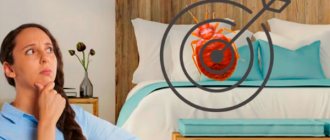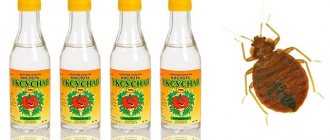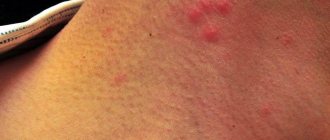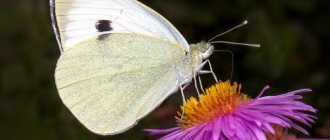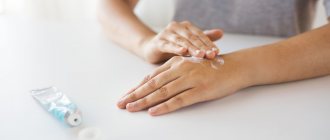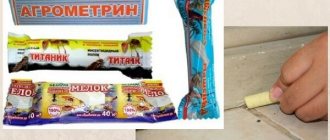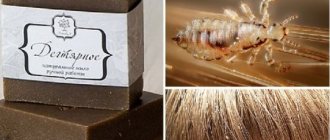As long as a person can remember, bedbugs have lived near him. Therefore, it is typical for humans to constantly fight against these pests. Today there are many different drugs that can effectively fight these parasites.
Bug
But, besides them, there is also one proven and highly effective folk remedy - kerosene. It is with the help of this liquid that it is still possible to repel and remove these annoying small enemies of humans. Let's consider whether kerosene really helps against bedbugs, and how it can be used to fight these insects.
What are bedbugs afraid of?
In order to get rid of bedbugs, it is necessary to cause them a feeling of severe discomfort, which will lead to inhibition of their physiological processes. Insects are afraid of:
- bright light;
- low or high temperature;
- pungent odor.
Each point should be examined in more detail.
Bright light
Bedbugs are nocturnal. If you turn on the light, they immediately scatter. In this regard, to get rid of parasites, you can leave a bright light bulb or fluorescent lamp on at night. However, it is worth remembering that a hopeless situation can force bedbugs to adapt to the light and attack according to their biorhythm - from 3 to 8 in the morning.
Low or high temperature
Sub-zero temperatures work best against bedbugs. In winter, it is advisable to open all windows for at least a day. In this case, it is necessary to deprive the parasites of the opportunity to hide in clothing or in a warm place.
Temperatures above 35 degrees are also effective. However, its application is very limited, and therefore it is not as popular as room cooling.
Strong odors
The strong and pungent odor helps get rid of insects. Both chemicals and plants are used. Kerosene against bedbugs has gained the most popularity. It allows you to effectively combat blood-sucking pests.
How does kerosene affect bedbugs?
Many people are familiar with such a folk pest control method as kerosene for bedbugs.
Reviews about it are mostly positive, but it should be remembered that this chemical helps, if necessary, to expel, and not completely destroy, insects in the room. And the effect is possible only with a slight infestation of parasites. According to statistics, this technique works well when fighting a small number of bedbugs, when the presence of several individuals is noted. But does kerosene help against bedbugs when there is a significant accumulation of them? The answer is often negative, since its qualities and properties are not sufficient to destroy a large number of adult individuals, as well as the eggs they lay.
Before answering the question of whether bedbugs can be removed with kerosene, you should understand how the chemical works. Kerosene against bedbugs at home makes it possible to get rid of insects at the initial stage of their reproduction.
The mechanism of action when using this product is quite simple. The chemical reagent acts on the respiratory system of insects by penetrating their spiracles, which are located throughout the body and are thin villi. Particles of the substance form an impenetrable film, which leads to suffocation and death of pests. When fighting against bedbugs, it should be taken into account that a positive result will be achieved only if the entire body of the bug is covered with the substance, otherwise it will survive.
Is it possible to treat residential areas with kerosene? By spraying the surfaces of places where bedbugs have been observed with the preparation, only a temporary effect can be achieved. However, if there is no food after some time, the pests may return. Therefore, this method only helps if many conditions are met for the complete destruction of blood-sucking insects. Whether the parasite will be completely destroyed and not temporarily expelled from the premises depends on the correct use of the drug in question.
How does kerosene act on parasites?
Kerosene does not depress the nervous system, but acts as a poison on the parasite. The bug's body has a large number of spiracles through which it breathes. Kerosene covers the insect's body with an oily film, thereby blocking access to oxygen. The bug, unable to breathe, soon dies.
For those insects that have not been exposed to kerosene, its smell has a frightening effect. This encourages them to leave the room in search of a place where there is no “aroma” of kerosene.
Operating principle
Once on the surface of the body, kerosene envelops the body of the bug with an oily film. It closes the spiracles through which the parasite exchanges gases with the environment due to which the insect cannot breathe and suffocates. Kerosene against bedbugs begins to act instantly after spraying.
In addition, part of the product may get inside the parasite, which will cause poisoning of the body. Severe intoxication will cause the death of the insect.
Effect of kerosene
The process of oil distillation provides us with an indispensable product - kerosene. By the way, it has found wide application in various industries. It is also used in domestic conditions, and one of the ways of using it is to fight parasites. The fact is that the product has an insecticidal effect, which allows you to destroy harmful insects.
It is successfully used against bedbugs, lice, fleas and shows excellent results. A large number of modern chemical products are made based on kerosene. The great advantage of this substance is the ability not only to exterminate parasites, but also to destroy insect larvae, and not all modern means can provide such an effect.
Regarding kerosene, it has a complex effect, which is superior to most insecticides. It affects adults, destroys larvae and prevents the appearance of new bedbugs. If we talk about modern means, they all have a similar mechanism of action. Once in the body, the active substance affects the nervous system causing paralysis and then death.
Kerosene has a completely different effect, as an asphyxiant and poisonous agent. When the substance hits the bug, it begins to be absorbed into the body through the chitinous membrane and enters the respiratory tract. Next, the spiracles are blocked, which leads to the fact that oxygen does not enter the body, suffocation and death occur.
Rules for using kerosene
First of all, you need to protect yourself from inhaling vapors and getting kerosene on your skin and mucous membranes. To do this, wear a mask, and all exposed parts of the body are covered with a long-sleeved jacket and jeans. You must wear gloves on your hands. If the product gets on the skin or mucous membranes, rinse thoroughly with running water. If the drug gets into the stomach, artificially induce vomiting, take activated carbon - 1 tablet per 10 kg of weight and seek medical help.
When treating premises, all windows and doors should be open, and no strangers should be present in the apartment, especially children and animals. Since kerosene is a flammable substance, the use of open fire sources in the room is prohibited, including smoking.
There are several ways to use kerosene against bedbugs:
- spray treatment. All places where bedbugs can live are sprayed - behind radiators, under the bed, etc.;
- 100 ml of kerosene and 5 g of naphthalene are mixed. All hard surfaces are treated with the solution. A pungent odor will help prevent parasites from protruding from their habitats. To achieve a positive effect, treatment at least 1 time per month;
- a product based on 100 ml of kerosene and 200 ml of turpentine will help reduce the activity of bedbugs.
All hard surfaces located in the immediate vicinity of the sleeping area are treated. After this, thoroughly ventilate the room; wet cleaning is done after two days.
How to use kerosene against bedbugs?
In order for kerosene to work, it is necessary to carefully treat the “bug nests” with it. There is no point in treating all surfaces in the room with it; the product should get directly onto the insect and cover it with an oily film.
Sometimes bedbug clusters in a home are not so easy to detect. These insects love to “nest” behind the walls of furniture, under window sills, near sockets, window frames, on the legs of tables, chairs, beds, under baseboards and in other hard-to-reach places.
Kerosene does not destroy bedbug eggs, so you may have to repeat the treatment after some time. You can resort to cleaning the premises immediately after the death of bedbugs. It is best to burn insect corpses; this will 100% destroy the eggs in the general accumulation of insects.
There is no point in treating mattresses, pillows, and blankets with kerosene. These household items are the favorite habitat of bed bugs. If they are heavily populated with bedbugs, then you should just get rid of them. To prevent bedbugs from returning to your home, it is better to burn damaged bedding.
When using kerosene indoors, some bedbugs may leave the treatment area and flee the pungent odor. It is necessary to mechanically collect escaping insects manually (use gloves) or with a vacuum cleaner, or simply crush them. Escaped insects can return to your home.
Sometimes kerosene is used together with denatured alcohol or turpentine. This mixture is used to treat the legs of the bed and a small space around them so that bedbugs cannot climb up the bed. Constantly changing pillows and bedding on a bed with such protective barriers will allow you to sleep peacefully even in an infected room.
You can also use kerosene to drive bedbugs out of hard-to-reach places, then poison them with dichlorvos or raptor.
Review:
We poured kerosene into the cracks between the boards in the floor. After a while, bedbugs began to crawl out of there. We first crushed them, then sprayed them with dichlorvos. The bedbugs have disappeared from the house. But now there is no way to remove the smell of kerosene poured between the floorboards! The product itself is good, but difficult to use.
Dina, Vologda
Review:
While in the army I encountered such a problem as bed bugs. In the barracks they were visible or invisible, they prevented me from sleeping at night, then my whole body was covered in red bites from them. I read somewhere about this method, where you need to smear kerosene on the legs of the bed and properly beat or clean the linens and pillows. That's what I did. I drained some kerosene, mixed it with machine oil and thickly smeared it on the legs and floor. In the morning, I was the only one of my colleagues who had not been bitten by bedbugs at night. Then everyone followed my example.
Victor, Vladivostok
Most often, bedbugs settle in hard-to-reach places
Places of "nesting" of bed bugs in the apartment
Flaws
Firstly, the disadvantages include the smell of kerosene, which lingers in the apartment for a long time after it has been ventilated. Secondly, the product spoils furniture, which limits its use on expensive interior items.
Thirdly, kerosene requires careful handling - protection of the respiratory system, skin and mucous membranes, and do not forget that the substance is highly flammable. Fourth, for truly effective control, bedbugs must be covered with kerosene so that they die.
How not to harm human health
Kerosene has a toxic effect on the body. When using it, you should be extremely careful - otherwise you can not only remove bedbugs, but also cause harm to human health.
Inhalation of its vapors for a long time may result in narcotic intoxication, dizziness, headache, and possible fainting. Due to intoxication of the body, the liver suffers.
In contact with the skin and mucous membranes, the substance causes severe irritation and allergic reactions.
To avoid negative consequences, you must adhere to the following rules:
- cover the skin with clothing (long sleeves, pants), special means (rubber gloves);
- when processing, wear a respirator to protect the respiratory tract;
- if kerosene gets on your skin or mucous membranes, immediately rinse these areas with water;
- if accidentally swallowed, induce vomiting, drink activated charcoal, see a doctor;
- When using kerosene indoors, windows must be open.
If you feel unwell, you need to go out into the fresh air. Treatment should only be carried out in the absence of other residents of the apartment. Kerosene and its vapors are highly flammable; it is especially important to follow fire safety rules.
You must not turn on the gas stove, smoke, light matches or other sources of fire. The product is applied only to hard surfaces and is not at all suitable for treating textile products.
After the procedure, the room should be well ventilated. After 1-2 days, wash everything thoroughly.
Conclusions: all the pros and cons
Kerosene against bedbugs is only effective in cases where the population is small. If there are a lot of them, it is almost impossible to rid your home of parasites on your own. This may lead them to find new habitats. Despite its advantages, kerosene has many disadvantages, which also need to be taken into account. In this regard, it is better to seek help from specialists who will rid your home of blood-sucking parasites effectively and without harming the health of those living in an apartment or private house.
Advantages and disadvantages
Of course, there is simply no ideal insecticide; each can offer its own advantages, but each also has disadvantages. Therefore, before deciding in favor of this method, you need to weigh all the pros and cons.
Advantages:
- Availability and low price. You can buy it anywhere, and the low price will please anyone.
- Efficiency. This is an absolute advantage that has been proven in practice. In addition, it can kill larvae, which significantly increases its effectiveness.
- Use at home. No special skills or training required.
Flaws:
- The procedure must be carried out several times, this is the only way to achieve a positive result.
- Of course, the flammability of the product is considered a disadvantage, so any work with it requires maximum care.
- This is a toxic liquid and upon contact with skin, allergic reactions are possible; the vapors are also poisonous and cause poisoning if they enter the respiratory tract.
- If the room is poorly ventilated, then in addition to an unpleasant odor, headaches may appear, which indicates that harmful fumes are entering the body.
It is worth paying attention to one more point. Efficiency is achieved only through direct contact of the insect and the oil product. Regarding the smell, bedbugs are absolutely indifferent to it; moreover, they get used to it very well and the “aroma” does not bring any positive effect. Therefore, treatment must be carried out taking into account these points, because individuals who simply retreated to a safe distance will definitely return after time.
Reviews from people after use
Analyzing the opinions of those who have already used kerosene to eliminate bedbugs will help evaluate its effectiveness.
Thus, Alena from Yekaterinburg speaks of the high degree of negative impact of a mixture of turpentine and kerosene on the respiratory system:
After two weeks of using this mixture, a cough and chest pain occurred. I had to abandon this method and contact the Sanitary and Epidemiological Station. The result is complete elimination of insects from premises quickly and without harm to health.
Galina from Moscow also talks about the possible consequences of using a folk remedy:
Even long-term spraying of places where parasites accumulated over two months did not give the expected result. The bedbugs became less active, and after the end of use they began to appear again.
Sergei from Saratov notes that:
Pure kerosene helps, but cough and nasal congestion arose in all family members during the process of self-disinfestation. The result was the use of a ready-made professional product: the insecticide, which was used by SES employees, coped with the problem, eliminating the insects forever.
Prevention to prevent bedbugs from appearing
There are a number of measures aimed at preventing the appearance of bedbugs at home:
- process furniture and household appliances purchased second-hand or refurbished;
- periodically inspect the fur of pets for the presence of bedbugs;
- upon returning from a business trip or vacation, inspect and process things;
- Wash bed linen at 90 degrees and iron;
- regularly carry out wet cleaning in an apartment or in a private house.
Thus, kerosene is effective against bedbugs only when the substance gets directly onto the insect’s body. The pungent smell will scare him away, but for how long? Moreover, the use of kerosene has a large number of disadvantages. In this regard, before using kerosene against bedbugs, you need to weigh the pros and cons.
Efficiency of application
It is difficult to remove insects from your home using traditional methods alone. But they have an additional effect in combination with other means. Finding where bed bugs are hiding is a major factor in the process of exterminating them.
It is important to inspect all objects where pests most often hide. During disinfestation, carefully treat everything separately.
After the procedure, put the bed linen in the wash at a temperature of 90 degrees.
This method does not always lead to the desired effect. Another problem may occur - the spread of insects over an even larger area. In addition, this liquid is highly flammable. When processing a room, a fire hazard is created.
How to detect pests
Insecticides are toxic substances that can cause poisoning if used incorrectly. Most drugs are approved for independent use. The instructions clearly indicate the sequence of actions.
Initially, you should worry about personal protective equipment, then poison:
- respirator;
- glasses;
- latex gloves;
- suit with long sleeves and trousers.
Using a cloth bandage or towel instead of a respirator is generally unwise. Through the layer of fabric, small particles of insecticide are able to penetrate the respiratory tract. And it will not be possible to thoroughly treat the premises in such conditions.
If you experience dizziness, weakness, or deterioration in health, you should stop poisoning
bedbugs, go out into the fresh air. Then wash your hands with soap, wash your face, and take 10 tablets of activated carbon.
After treating the room, you should open the windows in the apartment and doors for ventilation. Small particles of insecticide can remain in the air, enter the body when inhaled, and contribute to poisoning. Draft and fresh air carry particles out of the room. After 2 hours of ventilation, you can enter the apartment. You should carry out wet cleaning by adding soda and detergent to the water. But wash only in places where hands can touch. The product should remain on the rest of the surface for further effect. After all, 100% destruction of bedbugs will not happen immediately. The insecticide does not affect eggs. A new generation of bedbugs will appear, get poisoned, and die.
At first, uninvited guests are difficult to notice. A few bites after a night's sleep can be considered mosquito bites. Only with an increase in the population and regular feeding of your blood does the presence of pests become noticeable.
Typical signs of a home being infested with bedbugs are the following:
- bites on the body, women and small children are at risk. One bite is not an indicator; the bloodsucker makes up to seven holes in the skin in one meal, then hides in a dark corner. Therefore, the bites line up in a small stripe;
- an unpleasant odor that is difficult to remove. The aroma is similar to the smell of rotten berries, bad cognac;
- the presence of adults or larvae on the bed;
- remnants of chitinous cover (dark brown plates on the bed, in the area of the baseboards). There is also a large amount of excrement;
- blood on the sheet. The bug injects saliva, which prevents blood clotting, so after bites characteristic brown dots remain on the bed.
Kerosene in the fight against bedbugs
Kerosene is a well-known remedy for fighting bedbugs. This is a mixture of carbons and a fraction of oil, used as fuel and for some domestic needs. There are kerosene with higher or lower flash point, density and percentage of other substances, for example, sulfur.
Thus, we can distinguish kerosene used as fuel for jet engines, for tractors and other agricultural units, used in mines for lighting, as well as household kerosene for kerosene lamps, stoves and other small appliances.
In the latter case, they talk about so-called light kerosene. This type is most often used for pest control.
How to use it correctly
The most important rule that must be observed when working with this substance is safety. Namely, you need to work with it while using personal protective equipment. When a room is being treated, it is necessary to ventilate the premises well, since the fumes released by kerosene are toxic. Another point is that it is highly flammable, which means that working with it near fire sources is prohibited.
In fact, there are quite a few ways to use kerosene at home. Quite often, other components are added to it to enhance the effect on bedbugs. It can be used in its pure form, with the addition of turpentine, vinegar and denatured alcohol.
In order for the treatment procedure to bring the most positive result, it is necessary to apply the product correctly. It is necessary to pay attention to the places where bedbugs can appear most often, where they have set up their home and where they might want to settle down. Pay attention to the cracks and insert a sufficient amount during processing.
You can apply the substance in any convenient way, for example, use a spray, you can use a medical syringe, or just take a cloth. After the first treatment, it is necessary to repeat the procedure after 3-5 days, this will ensure effectiveness and prevent new contamination of the premises. There may be several such repeated treatments.
Chemicals against bedbugs
Now there are many different products that manufacturers specifically develop for baiting bedbugs. These products are available in different forms - some in the form of powders , which must then be diluted with water, some in the form of concentrates . And some are sold ready-made, just take it and use it - for example, aerosols and ready-made liquids . As an example, we will give just a few of these chemicals with descriptions and reviews of people who successfully poisoned bedbugs with one or another means.
Efficient Ultra
Manufactured by Hallmark Chemical, The Netherlands
- Product form: insecticide in milky-white liquid
- Container volume – 1 liter polyethylene bottles.
- Active components in the composition – Dicarboximide (MGK-264) 4.96%, Piperonyl butoxide (PPB) 1.66%, Propoxur 17.2%, Tetramethrin 0.86%
- The focus of the drug is to combat harmful insects and bacteria. Often used to prevent epidemics.
- How to use - the drug must be diluted with water strictly according to the instructions that come with the canister (the norm for insecticide is 5 grams of product per 1 liter of water). The finished working solution or concentrate is simply sprayed through a spray bottle.
- One hundred percent effect after treatment occurs within 24 hours , and the first signs of insect death already show themselves after 2-4 hours.
- Toxicity is low (hazard class 4). But it is better to carry out the treatment indoors, where there are no people or pets.
- Shelf life is no more than 2 years, the drug is resistant to low temperatures (can be stored at temperatures down to -20˚C).
- Cost – 2200 rub.
Averfos
- Manufacturer – Russia
, . - The form of release of the product is concentrate
. - Container volume – 1 l.
- The active ingredient is chlorpyrifos 48% .
- The effect after treatment occurs within 24 hours and lasts for another 3 months.
- Preparation of solution: 5 ml/l; consumption – on non-absorbent surfaces 50 ml, on absorbent surfaces – 100 ml per 1 square meter.
- Toxicity is high.
- Average price - 1550 rubles .
BUY
Review:
Sveta, 20 years old, Chelyabinsk. My mother works at the sanitation station. And one day, when bedbugs appeared in our hall, she had to bring some of this drug from work. It was called "Averfos". Removes nasty insects at once! I didn't even have to carry out multiple treatments. True, we left home for a couple of days. But when we arrived, we even saw dead bedbugs behind the sofa.
Medilis-CIPER
- Product release – Russia, company “Medilis”.
- Product form – concentrate.
- Active ingredient – cypermethrin 25%
- Toxicity – medium, class 3
- Volume 500 ml.
- Price – 1500 rub.
BUY
Review:
Natalia, St. Petersburg. I bought Medilis, which was praised on the Internet, but in the end I had to use half a bottle to more or less immobilize the bedbugs on the baseboards where they appeared. Thank God, such dirty tricks didn’t reach the bed or the upholstered furniture. The effect is serious.
Medilis Cyper video:
Danger of bedbugs
Bedbugs are small parasites that can be seen at night. The insect's body is flat, 5 mm long, and there are no wings. They hide not only in a person’s bed, but also in upholstered furniture, carpets, and walls under wallpaper. The reproduction rate is high; one female is capable of laying over 300 eggs within 7 days. Parasites live in colonies and pose a danger to humans:
- the parasite is blood-sucking, feeding on the blood of animals and humans;
- bites cause severe itching and allergic reactions develop;
- spread infectious diseases;
Since bedbugs are small, they cannot be detected immediately. The first sign of their presence is bites on the human body. In the morning after sleep, small drops of blood can be found on the sheets. Insects leave minor black dots. These are products of their vital activity. How do bedbug bites differ from other parasites:
- During a mosquito infestation, bites are located only on open areas of the skin. When bedbugs attack, their traces remain all over the body.
- The location of the bites follows one line of 3-4 holes.
- Bed bugs hunt at night in groups of 20 insects, so many bites will be visible.
- The bitten area darkens, acquiring a brown tint. Redness and swelling form around the wound. The bite is very itchy.
The resulting wounds are cauterized with iodine or brilliant green, after rinsing under running water. To prevent an allergic reaction, take an antihistamine. No other treatment is required. To prevent infectious diseases, you should go to see a doctor.
